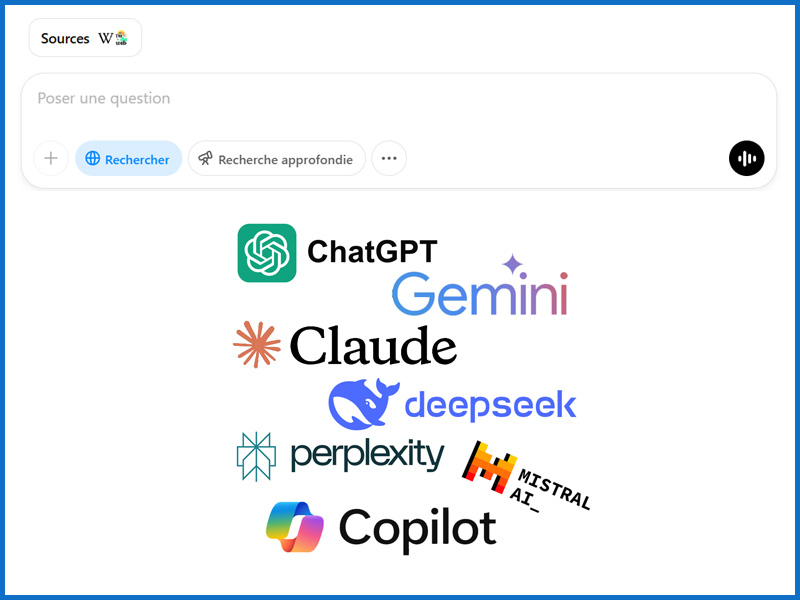
-
 By Julien Klaine
By Julien Klaine
- 25/03/2025 à 18:40
- Guide
Large Language Models (LLMs), such as ChatGPT, Bard, and Perplexity, have transformed our interaction with online information. When responding to queries, these models select specific sources based on various criteria. Understanding these criteria is essential for content creators and SEO specialists looking to optimize their visibility in responses provided by these AIs.
Criteria for Source Selection by LLMs
1. Relevance to the Query
LLMs prioritize pages whose content closely aligns with the subject and intent of the user's query. Titles, subtitles, and sections containing clear terms or answers to the posed question increase the likelihood of being selected. For example, an article titled "10 Best SEO Agencies for Startups in 2025" will be relevant for a query on "best SEO agency for startups." The models also interpret search intent, identifying whether the user is looking for an opinion, a list, or a comparison, and adapt their selection accordingly.
2. Authority and Credibility of the Source
The perceived reliability of a site strongly influences ranking. LLMs favor established sites known for their trustworthy content. A domain's authority, reinforced by quality backlinks and brand recognition, plays a crucial role. For example, for a technology-related query, sites like TechCrunch or PCMag are prioritized due to their reputation. LLM algorithms integrate signals such as E-E-A-T (Experience, Expertise, Authority, Trustworthiness) and spam detection to assess credibility. Thus, websites with strong reputations and solid link profiles are more likely to be cited.
3. Quality and Depth of Content
The depth and accuracy of content are essential. LLMs analyze whether a page provides detailed information, authentic perspectives, and a well-structured argument. Comprehensive content covering a topic in detail is considered more valuable than a superficial article. In-depth articles, including data, case studies, or expert citations, are favored. LLMs also cross-reference facts; if the same information appears on multiple reputable sources, it reinforces the perception of its accuracy.
4. Structure and Format of Data
The presentation of information influences the ability of LLMs to extract and use it. A clear structure, with descriptive titles, bullet points, or numbered lists, facilitates AI analysis and summarization. For example, being mentioned in an "authoritative list" significantly increases the chances of being cited. LLMs also prefer content that is easily accessible in HTML, as they cannot always execute complex JavaScript scripts or view hidden elements.
Use of Search Indexes by LLMs
LLMs such as Bard, Perplexity, and ChatGPT rely on established search indexes, such as those from Bing or Google, to access up-to-date information. For example, when ChatGPT "browses" the web, it uses the Bing search API to find relevant sources. Similarly, Bard and Perplexity incorporate real-time search capabilities, allowing them to provide current and verified information.
Impact of Backlinks and SEO Content on LLM Results
Backlinks and SEO-optimized content play a significant role in site visibility within LLM responses. High-quality backlinks from reputable sites enhance a site's authority, increasing its chances of being selected by LLMs. Additionally, well-structured content, rich in information and optimized for search engines, is more likely to be recognized and utilized by LLMs. Therefore, traditional SEO strategies, such as creating high-quality content and establishing strong backlinks, remain essential for improving visibility in responses generated by LLMs.
To have your content selected by LLMs, it is crucial to maintain high relevance, establish your site's authority, produce quality content, and ensure a clear structure. Proven SEO practices, including backlink creation and content optimization, remain vital in this new environment dominated by LLMs.


